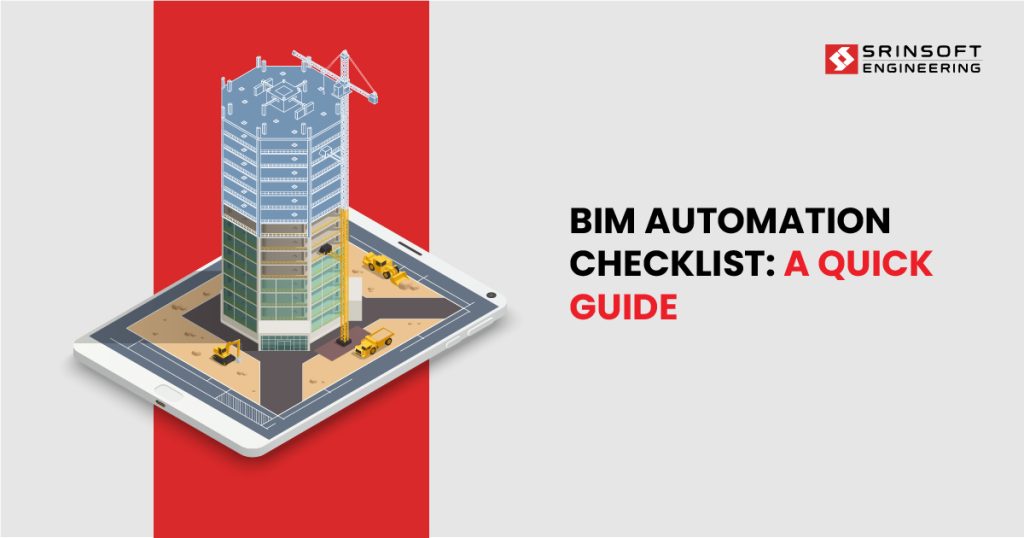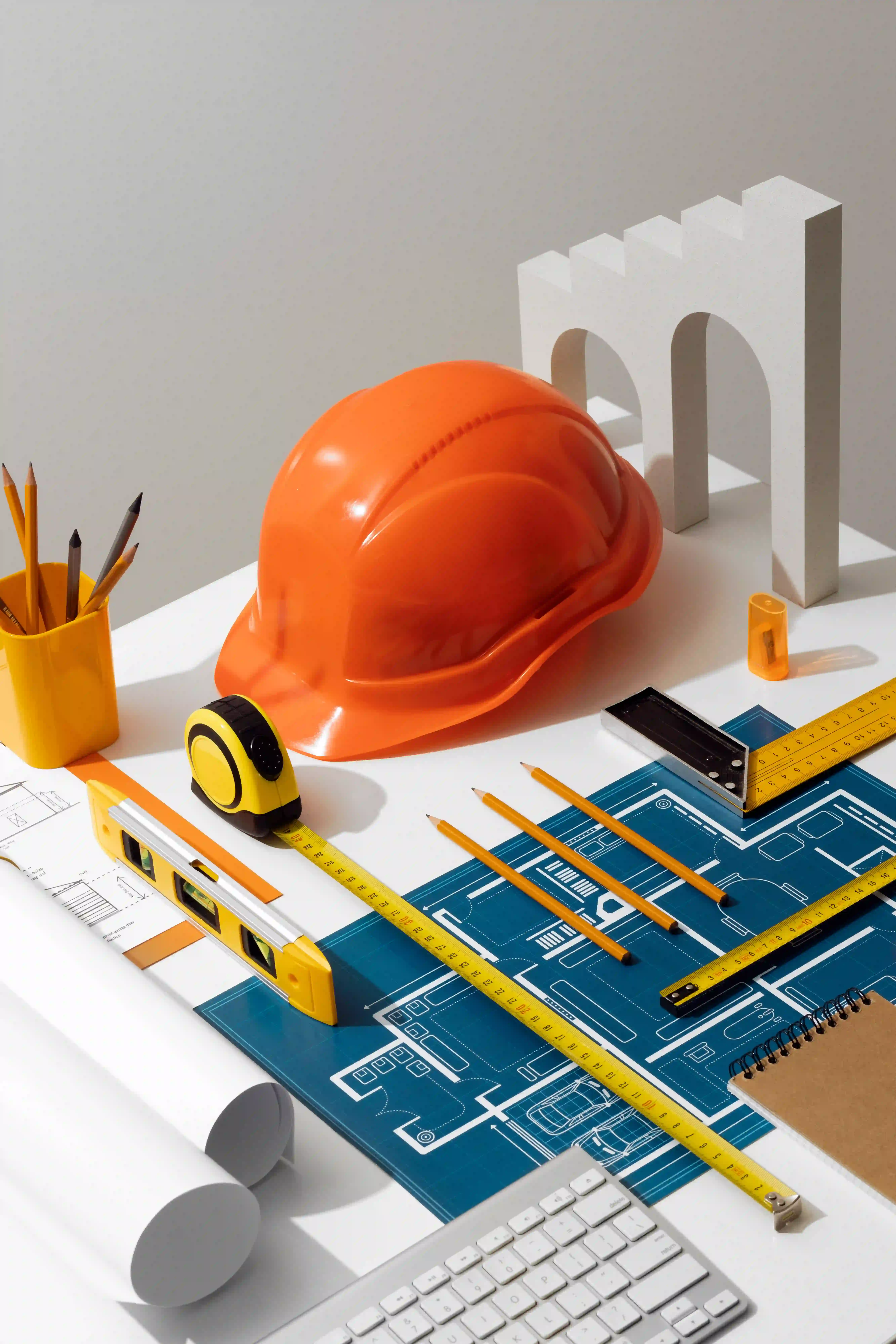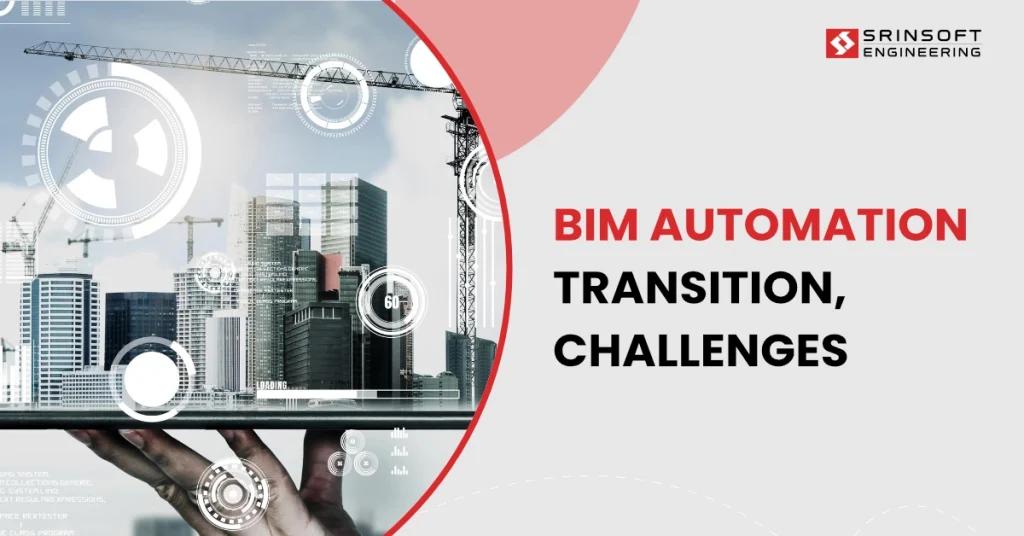
Building Information Modeling (BIM) has evolved the construction industry by enabling designers to design, plan, and execute projects with better cooperation, efficiency and accuracy. However, ensuring quality and stability in the BIM model becomes challenging as BIM adoption increases. This is where BIM automation plays a crucial role in streamlining quality assurance and quality checks. This helps designers focus more on important concept designs and construction decisions
BIM Automation checklists help designers standardize model validation processes by ensuring that model elements meet required specifications, clash detection is conducted, regulatory compliance is verified to prevent legal issues, and project stakeholders receive accurate and reliable data.
This blog post provides an intensive understanding of the importance of quality assurance through BIM automation, its benefits, and the use of structured checklists in construction. Improving the BIM process by automating parameter management, model documentation, and clash detection with a strategic checklist enhances project outcomes.
Understanding the Role of BIM Automation in Construction Projects
Building Information Modeling (BIM) is a digital representation of a building model that helps construction organizations in the planning, designing, construction, and management of building projects.
As industrialization and construction projects continue to grow, the need for BIM automation has become more crucial to play a sustainable building lifecycle management in the architecture, engineering, and construction (AEC) industry.
BIM Automation is the process of automating design workflows using advanced AI and machine learning algorithms. This enables the execution of routine tasks within the BIM workflow without requiring any manual intervention.
Key Roles of BIM Automation in Construction
- Standardization of Models: BIM automation ensures that models follow configurable standards, rules and regulations
- Effortless Clash Detection: BIM automation helps to automatically identify the clashes between building elements in any discipline, including architectural, structural, MEP, etc.
- Advanced Collaboration: BIM automation enables smoother information sharing and coordinated workflows between project stakeholders such as architects, engineers, and contractors.
Key Focus Areas of BIM Automation in Construction
- Automating Sustainable Design Adjustments: BIM in sustainable building design helps in quickly designing all the required modifications that lead to a better alignment with the new or specific sustainability targets of the company.
- Quality Assurance: Guarantee your models meet the required specifications and contain all essential information. This ultimately saves time and money since it eliminates the need for unnecessary revisions later.
- Coordination: BIM automation helps to obtain clash-free models while coordinating different elements of models such as architectural, structural, and MEP (mechanical, electrical, and plumbing) elements together
- Optimizing Material Selection and Usage – BIM automation helps construction organizations in the selection of eco-friendly materials and minimize waste by utilising the proper usage of the material for the building models
- Supporting regulatory Compliance – Ensures that the design model follows all of the necessary specifications, standards, and requirements, dramatically reducing the potential of non-compliance issues and improving the reputation of the construction team.
- Building Life Cycle management – BIM evaluates organizations to assess the long-term environmental impact of their projects, from construction to demolition, ensuring better lifecycle management.
Explore: How BIM Automation Leads to Cost Savings and Increases Efficiency
Why You Need BIM Automation Checking Processes and Checklists
Although BIM automation increases productivity, mistakes can cause workflow disruptions and lower project quality if they are not properly validated. Automation operates easily and produces reliable results when organized checking procedures and checklists are put in place.
- Error Prevention: By detecting and fixing errors early on, routine checks help cut down on expensive rework.
- Standardization and Consistency: Guarantees that documentation, models, and parameters meet project requirements.
- Quality Control: Confirms that automated processes adhere to specifications for precision and comprehensiveness.
- Efficiency & Reliability: Preserves project integrity while minimizing manual oversight.
- Compliance assurance: Verifies that client requirements and industry rules are being followed.
Systematic checking procedures make BIM automation more dependable, enhancing project execution and lowering risks.
BIM Automation Checklists
The primary purpose of the checklist is to be used in different stages of creating the BIM model, ensuring consistency and accuracy while including all necessary information.
Here are a few important BIM Automation Checklists:
1. Data Validation
Data validation is a process of validating the completeness and accuracy of all input data, including files, naming standards, and parameter values. During validation, confirm that all element names, tags, and parameters comply with the project’s naming standards.
By leveraging BIM automation in data validation, designers can achieve an effective data structure by automatically executing the model with predefined rules and conditions. This automation process minimizes errors and eliminates inconsistencies across various models without the need for manual intervention
2. Model Quality Checks
Verifying the quality of a 3D BIM model is crucial to ensuring it meets project requirements. This process involves checking the model’s geometry for duplicate elements, disconnected components, or faulty connections.
By integrating automation support, the BIM model ensures that all elements are correctly positioned, properly aligned, and free from gaps or misalignments. This automation process is carried out by running a predefined checklist and generating failure reports, which help designers address and resolve these issues effectively.
3. Standard Compliance
Maintaining a consistent approach in a BIM project requires adherence to industry standards. This means verifying the model against BIM guidelines, building standards, and regulations. It is essential to ensure that naming conventions, families, templates, and modeling techniques comply with established standards.
Failure to meet these standards can lead to rework and miscommunication, ultimately affecting project efficiency. By leveraging automation, models can be validated automatically using a configurable rule-based system
4. Automation Script and Tools
Before implementing BIM automation, it’s essential to verify that all scripts and tools function correctly. This includes checking for errors, ensuring they produce the expected results, and confirming compatibility with the current BIM environment.
By leveraging BIM Automation, these step guarantees smooth execution and helps prevent interruptions during automated tasks. Frequent testing and updates enhance the reliability and effectiveness of the automation process by preventing issues caused by outdated programs.
5. Parameter Management
Effective parameter management is essential for controlling data in BIM models. Ensuring that all elements have the correct parameters assigned and consistently filled in prevents errors and confusion in automated processes.
Automating parameter updates enhances accuracy and reduces manual mistakes, leading to smoother workflows. Well-organized parameters enable efficient data extraction and reporting, supporting better project analysis and decision-making.
6. Clash Detection and Resolution
Automated clash detection helps identify conflicts between different building systems, such as MEP components intersecting with structural elements. Categorizing clashes by priority and generating automated reports streamlines the resolution process.
Once conflicts are addressed, verifying updates in the BIM model prevents recurrence. Regular clash detection minimizes costly on-site rework, ensuring smoother construction workflows and improved project efficiency.
7. Drawing and Documentation Automation
Automating the generation of construction drawings and project documentation saves time and reduces human errors. Ensure that views, sections, and schedules are created according to project requirements, with properly placed annotations, legends, and title blocks.
Automating updates to drawings as the BIM model evolves keeps documentation accurate and up to date. This improves efficiency, enhances accuracy, and accelerates project delivery.
8. Data Export and Reporting
Automating data export for quantities, costs, and schedules simplifies project management. Ensure that exported data aligns with the BIM model, maintaining accuracy in formatting, units, and integrity.
Automated reporting produces standardized, consistent outputs that meet stakeholder requirements. Reliable data exports enhance transparency, improve communication, and support better decision-making throughout the project lifecycle.
9. Project-Specific Requirements
Every project has unique needs that must be considered when setting up BIM automation. Adjust automation settings to align with specific modeling details, compliance checks, and client deliverables.
Ensure automated processes account for these requirements and integrate external tools or scripts as needed. Well-defined project-specific automation enhances the BIM workflow, supports tailored outcomes, and helps meet client expectations effectively.
Future Scope of BIM Automation
The future of automated Building Information Modeling (BIM) seems to be unlimited, with the industry becoming increasingly empowered. As technology continues to evolve, BIM and automation have become the tendency in the AEC industry
- AI-Powered Quality Checks: Machine learning algorithms enable the automation tools to learn independently from their validation patterns and refine their recommendations based on user expectations. This enhances the efficiency and accuracy of BIM model validation
- Generative Design: By leveraging AI, automation tools enhance design algorithms to generate a vast number of design alternatives and provide optimized solutions based on predefined criteria. This empowers designers to initiate new creations and reinvent design concepts.
- Digital Twins: The emergence of smart sensors and connected devices in physical assets ensures that real-time data is always available, making it easier to schedule maintenance and optimize operations. Digital twin technologies are converging, which will expand the way for greener and more efficient buildings.
- Cloud-Based BIM Automation: By incorporating automation tools into a cloud-based platform, designers may seamlessly access and edit the BIM projects in real-time from any location
- Blockchain for BIM: Blockchain is a technology that enables the implementation of data security and decentralization access control. Utilization of blockchain in BIM, only the authorized stakeholders can view and edit BIM data, providing transparency as well as trust to streamline to project execution process to the next level
Conclusion
By improving efficiency, accuracy, and collaboration, BIM automation has transformed the AEC industry. It guarantees that projects are completed on schedule and under budget while streamlining procedures and lowering errors. BIM automation will develop further as artificial intelligence, cloud computing, and robotics breakthroughs open up new avenues for enhancing construction procedures and project results.


